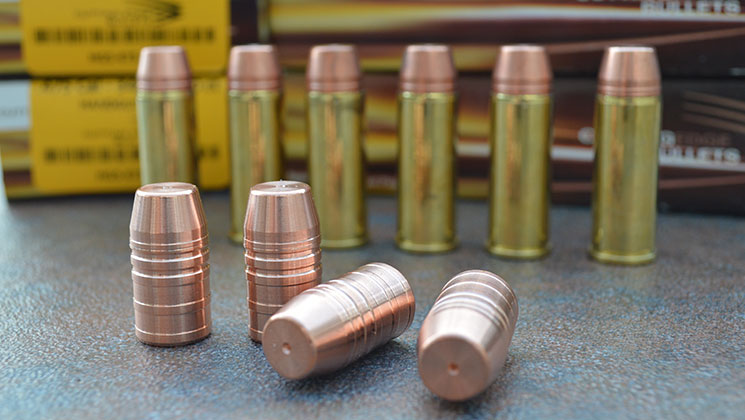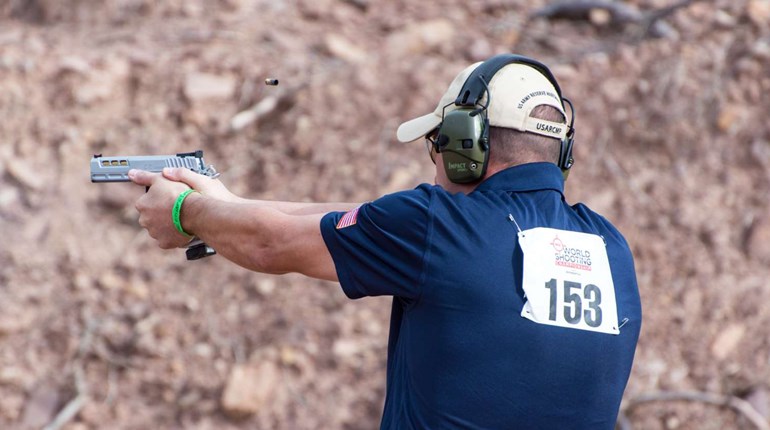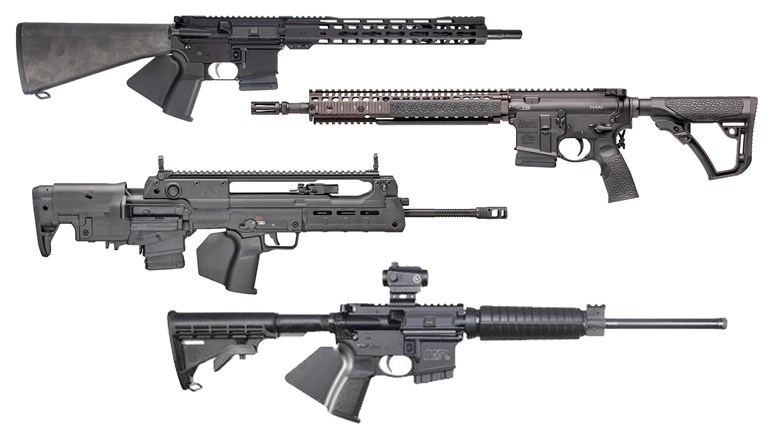
This hair-brained idea was hatched over more than a little sake at a local favorite Vietnamese restaurant. I explained to Editor in Chief Scott Olmsted the desire to take on the globe’s most notorious bovine, the African Cape buffalo, with a handgun. Olmsted looked at me like I might need some professional help, a look he reserves for me on just such occasions. But, after a pause he said: “Go for it. Arrange it, write it, and we’ll run it. Don’t get yourself killed."
With those marching orders, like a good Marine I set the wheels in motion. I had been planning this trip for more than a year. Well not exactly this trip, but a trip involving the bringing together of a large-bore revolver and a wild bovine of some sort, at spitting distance. Zimbabwe was my original destination, and Cape buffalo the target. A plan was set, and several months before my intended departure, disaster struck: My PH suffered a stroke. Zimbabwe was off the table. (Fortunately, he has made nearly a full recovery as this goes to print.)
I was in a bit of a pickle. I had a shiny new revolver in hand (thank you, Ruger), a great idea (some would argue the contrary) but nowhere to go on such short notice. I had been practicing all year with a variety of big-bore handguns; 2,148 rounds fired, with nearly 550 rounds out of the .480 Super Redhawk (SRH) I intended to use. I was ready. If something went wrong it wouldn’t be for lack of practice. Plan B was pressed into effect.
What other options were available? The notion of Africa had been exhausted. Australia was on the radar as it has a sizable population of Asiatic water buffalo, but the visiting hunter cannot import his own handgun for the pursuit. Then Argentina came into focus. The country has a rather large population of water buffalo—wild water buffalo. They are not native to the region (nor are Australia’s), but Argentina’s buffalo are nonetheless part of the fauna and flora of this southernmost South American country. Yes, Argentina was looking like the solution with each subsequent day.
Water buffalo are not Cape buffalo, and they benefit from living in the absence of a slew of predators that would like to turn them into filet mignon. However, they do potentially get larger than the much vaunted Cape buffalo, if that counts for anything. The bottom line for me and my plans for a handgun hunt remained intact, as all bovines can be cantankerous, and all are equipped with more than enough size, strength and headgear to turn any man into a grease stain. Ask anyone who has spent time around domestic cattle.
My initial inquiries indicated Argentina was also affordable. This is a relative term, but the destination isn’t far out of reach, and flights to it are significantly cheaper than those to Africa, and mercifully shorter. I was really starting to like the option.
Fortunately, I have a friend who has handgun-hunted Argentina and who was able to point me in the right direction. The outfitter he recommended, Caza y Safaris, is based in Buenos Aires. A plan was set in motion for a five-day hunt.
■■■
Buenos Aires reminds me of Western Europe, with thousands of apartment buildings stretching as far as the eye can see, the occasional barrio littering the landscape. There is a certain Old World charm and lots of traffic, and like much of South America it seems traffic laws are merely a suggestion. The city is crowded and bustling with activity.
Argentina is famous for its beef, and at the suggestion of my hotel manager, I wound up in a restaurant frequented by locals. It was a hodgepodge of themes, seemingly made from spare parts. I ordered what I could best discern as a ribeye, medium rare, and a bottle of Malbec, another product of Argentina. The 2-inch-thick work of art was still sizzling when the proud waiter presented it to me. The steak was perfectly seared on the outside, perfectly and evenly cooked on the inside, and delivered an exceptional flavor explosion. “If only the hunt is half this good,” I thought.
The next morning found me and my gear in a small van hurtling toward the outer regions of the province of Buenos Aires. The three-hour journey landed us on a large parcel of land, covered in swamps and marshes—the perfect breeding ground for mosquitoes. The lodge would have been inaccessible without four-wheel drive—we got bogged down twice on our way to the hacienda. My driver and erstwhile guide was Dr. Martin Pouysségur, a lawyer by trade, hunting guide by choice and partner in this operation. Skilled at the wheel, fluent in English, Martin promised a fun-filled week.
This property is a wing-shooter’s paradise, teaming with waterfowl. On it sits the main lodge for dining and food preparation, a bunkhouse and a couple of outlying support buildings. It’s a beautiful old hacienda without power. The bunkhouse abuts a marsh, the flapping of wings a constant soundtrack. Upon arrival we ate lunch and changed our clothes for something more appropriate for slogging through the marsh.
The first day we glassed vast tracts of marshland from a small rise in a stand of trees. There was water to our front and rear, giving us a good vantage point from which to observe. We had walked a good mile from the lodge to begin our search for a good bull. The flat marshland was interrupted only by thick stands of trees. I was struck by the sheer volume of game; the land was dotted with a number of different species of deer, some native, some introduced long ago to this South American nation. Sometime later we moved to another stand, using the thick foliage as cover, where we glassed for hours, until our shooting light was gone.
■■■
As I exited my room early on day two, I was greeted by the sounds of masses of waterfowl starting their day. Thick clouds carpeted the sky overhead, sprinkling occasional drops of rain. About an hour into our glassing routine, Martin’s walkie-talkie crackled with hushed but excited tones. A ranch hand had spotted a group of water buffalo while out riding, so we saddled up quickly and took off at a breakneck pace.
Later, in thick brush overlooking a wide swath of marsh, Martin climbed a nearby tree (the guy is athletic beyond belief), and intently watched through his binocular. He climbed down and the next forced march began at an even greater pace than the one that got us to this point.
Then I got a look at the herd of buffalo. It was small—a couple of cows, some calves and several large bulls—and it was in fairly deep water. The bigger problem was the buffalo were moving away from us, which created a cat-and-mouse game we played for several hours.
When we got to the edge of a brush line, the promise of a shot at a bull seemed imminent. I threw up the shooting sticks, ripped my revolver from its holster, settled the frame in the cradle and rapidly pulled back the hammer. The buffalo exited to our immediate left, but the shot was longer than I really wanted to take so we gave them a pass. The last thing anyone wanted was a wounded water buffalo. Then it all didn’t matter as the buffalo saw us and hastily headed for the border.
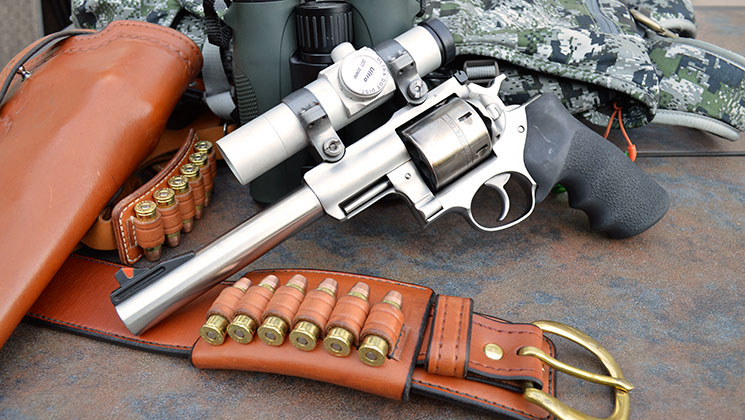
We pressed on to locate another herd, one that was not onto us. In short order we spotted another group, a good 700 yards away and completely unaware of our presence and intent. We watched awhile and determined they were going nowhere, so we broke for lunch.
We wanted to get onto the buffalo sooner rather than later, though, so lunch was a brief affair. We exited the lodge on foot, heading in the direction of the last known location of the herd, Martin again out front, with his right foot mashed to the floor. We crossed a flooded field (the rains were relentless the prior week), the water barely slowing Martin’s dogged pace, and circled behind a stand of trees behind which the buffalo purportedly hid. We gauged their location, and cut through the brush attempting to take the bovine by surprise. Problem was that by the time we crawled, slithered and otherwise painstakingly stalked up to their last known address, they had vanished without leaving so much as a postcard or forwarding address.
No matter—we quickly picked up their track and Martin again took off like a bat out of Hades. I dropped my pack and any other piece of gear that would slow down our progress. We managed to get around to the left and ahead of the group, a series of small sloping hills with sparse foliage hiding our advance. The buffalo were moving slowly but quite deliberately toward us, a low property-line fence channeling their movement. We set up behind a small tree and planned an ambush.
The big beasts moved closer, their dark shapes growing larger with each step. Martin picked out the bull with the best headgear, whispering with barely contained excitement, “That one."
They were nearly upon us now. My bull was second in line. The hammer of my Super Redhawk was already pulled back and my finger was lying lightly on the trigger. Showtime was only a moment away. When he was directly in front of me, I placed the red dot high on the bull’s shoulder and dropped the hammer. The big Ruger crashed and the big, black bull hunched up in reaction to the 340 grains of hot copper that punctured his lungs. Immediately, I pulled back the hammer and let another 340 grains fly, followed by a third. The bull was hit well and terminally wounded, but we didn’t want to see it go to water, which would make recovery more than a little problematic. So I unloaded the remainder of my cylinder, while Martin shot at the bull as well.
I am of the school of thought that believes one should keep shooting until the animal stops moving, or breathing, whichever comes first. Necessary? Not always. Sound policy? Absolutely. The bull crashed to terra firma after a 25-yard sprint, and drew his last breath. The smoke cleared and silence ensued. (In fact, we later confirmed my first hit double-lunged the bull.)
It was a beautiful animal with long, predominantly black fur flecked with brown. His shiny, smooth horns swept wide. The hunt was a resounding success. I had tried for a high-shoulder shot, but narrowly missed the support bones. Breaking down an animal this big is good policy to prevent it from escaping.
Hunting big game is thrilling. Hunting big game with a revolver exceeds thrilling by a factor of 10. That’s precisely why I do it. Handgun hunting never gets old or routine. Every stalk, every shot leaves me feeling exhilarated. Yes, there are range limitations, and it is a harder discipline to master, but it is imminently satisfying and too addictive to stop at this point.
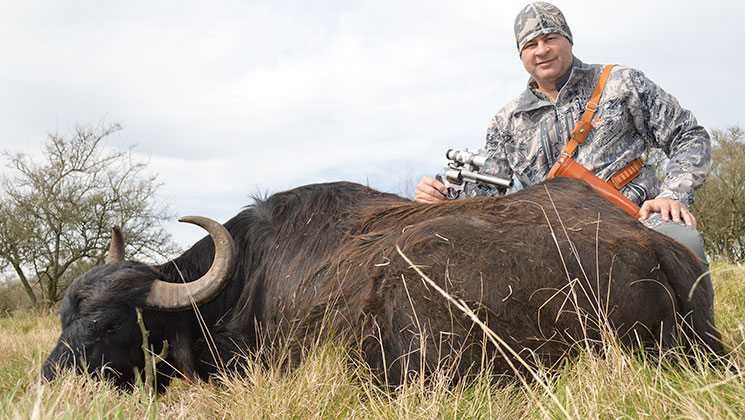
South American Hospitality
Africa was not in the cards for this voyage, but I learned Argentina has a charm all its own. From friendly inhabitants and great cuisine, to accessible and reasonably priced big-game hunting, Argentina should be on your destination list, if it is not there already. I know one thing for certain: I will go back to this South American paradise. Dr. Martin Pouysségur, a partner with Caza y Safaris, is a lawyer by trade, but by choice he is a consummate hunting guide. Visit his operation, Caza y Safaris, here.
Cutting Edge Bullets
Revolvers, at least on paper, possess rather anemic ballistic figures. Since velocity is constantly diminishing (and limited to start with in the case of revolver cartridges), the constants are bullet diameter and weight. The .480 Ruger has an unexpanded diameter any .30-caliber expanding rifle bullet would be proud to possess, making a large hole by default alone. What should one use on a large, heavily constructed animal? I am a proponent of flat-nosed, heavy hardcast bullets for their uncompromising straight-line penetration, but when I travel a long way to do battle with a large bovine, I want a little more insurance. Fortunately, relative newcomer Cutting Edge Bullets has addressed this need, offering a slew of flat-nosed, precision-made, copper solids, designed specifically for very large game.
I developed my loads with a 340-grain solid. At the suggestion of Cutting Edge, I used Power Pistol powder. It took only one range session for me to find my buffalo load, which delivered consistent five-shot groups just under an inch at 50 yards off sandbags.
